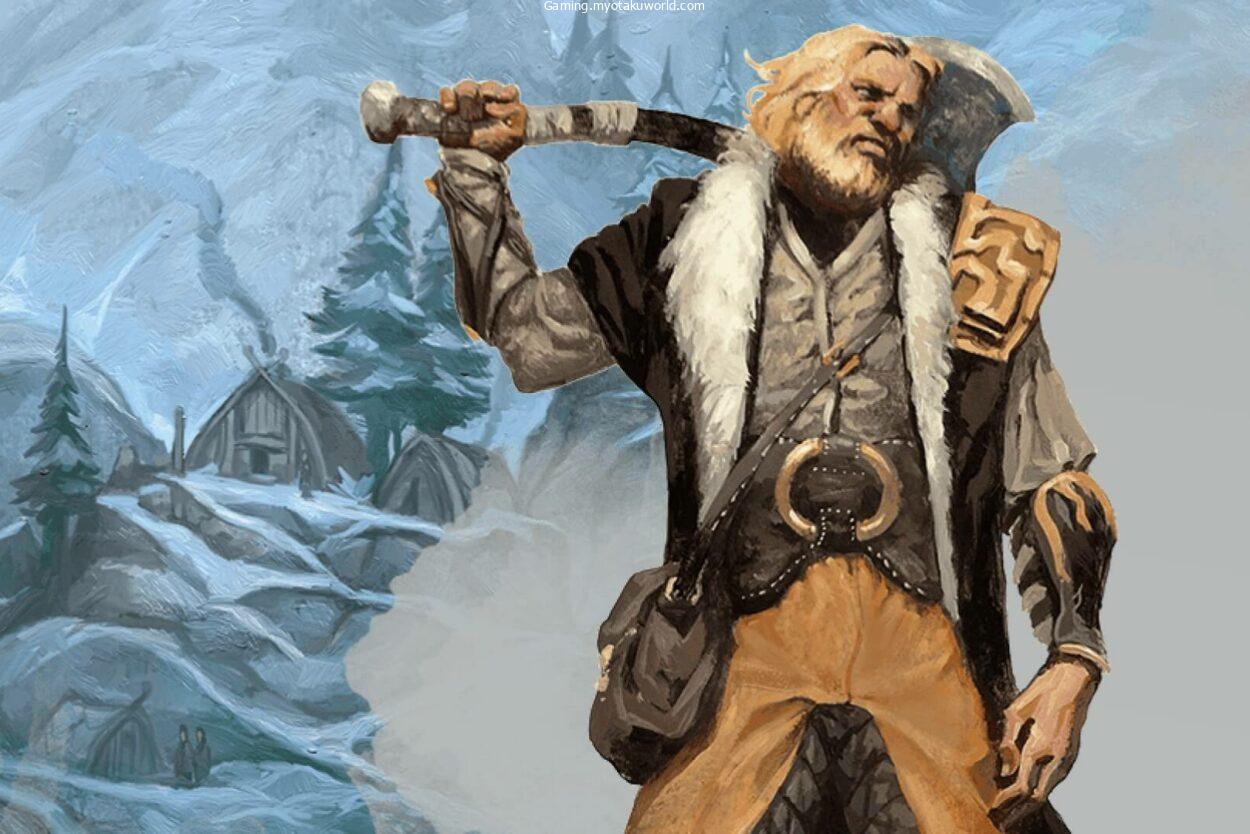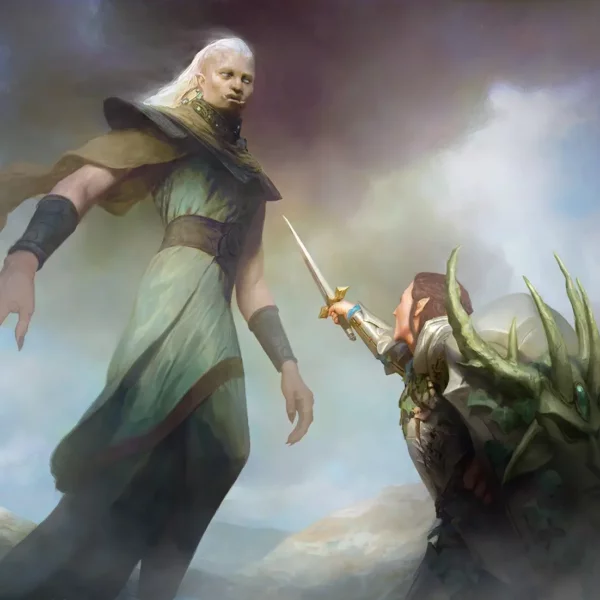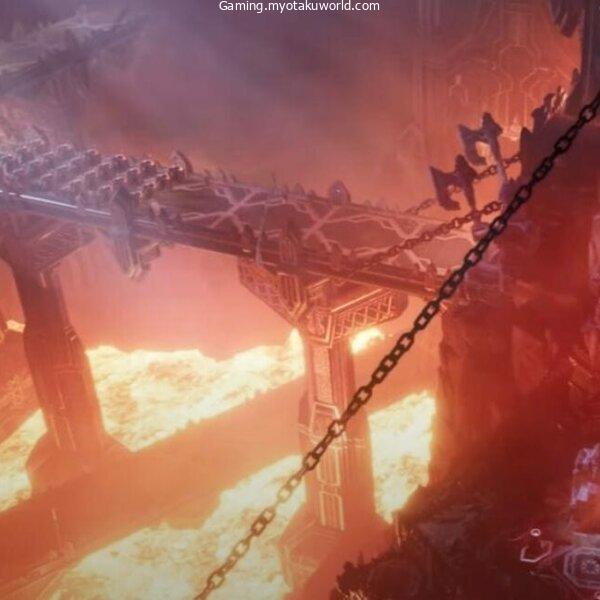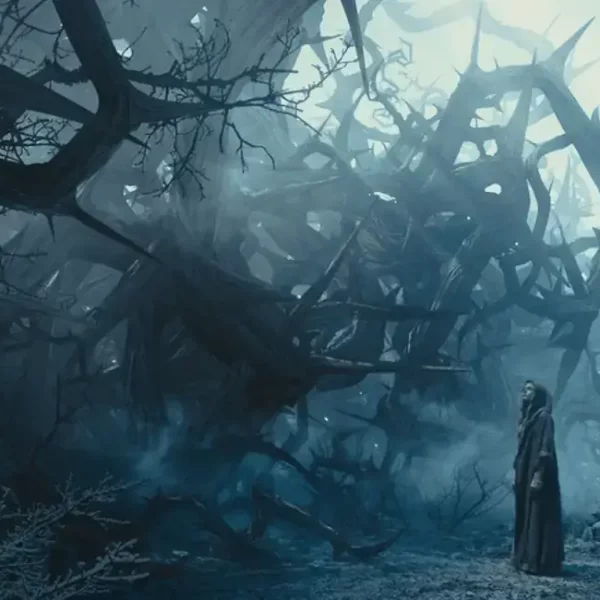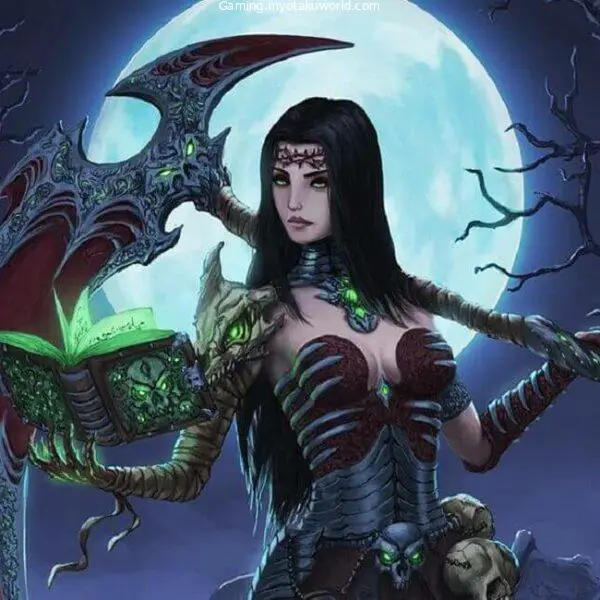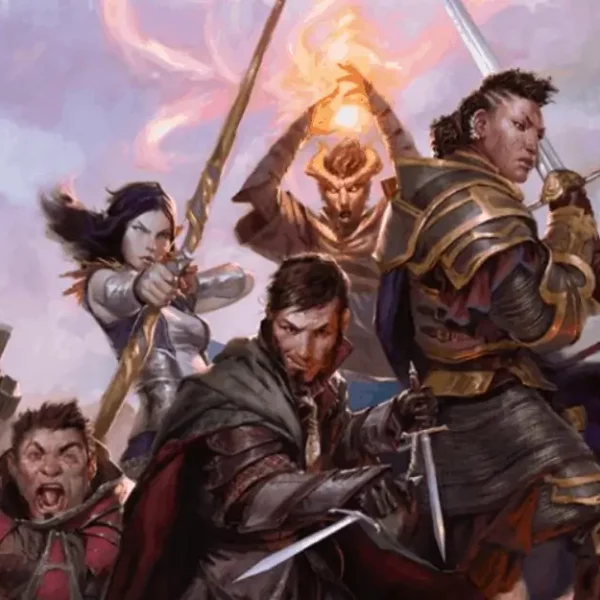Barbarians is a combat-heavy class that players who are looking for an alternative to Fighters will love.
You have many subclass options and customization options to choose from if you are looking for rage-fueled fighters. T
his Barbarians 5e Guide will cover everything you need to know in D&D 5e.
- What is the role of barbarians in 5e?
- How to make a barbarian?
- What are the special talents of barbarians?
- What are the Barbarian Primal Paths in 5e
- Path of the Ancestral Guardian
- Path of the Beast
- Path of the Berserker
- Path of the Storm Herald
- Path of the Totem Warrior
- Path of Wild Magic
- Path of the Zealot
- FAQs
- Final Words
What is the role of barbarians in 5e?
Barbarians are driven by the primal ferocity and inner rage and thrive in chaos. Many Barbarians are often from nomadic tribes that embrace their animalistic side. They have never lived in a city or town.
Barbarians have the option to enter a “rage”, which is a state in which their mind and body are fighting. This gives them additional power.
The 3rd level gives Barbarians additional features. As your Barbarian character will be part of your cultural background, it is important to consider which ‘Path you will choose.
How to make a barbarian?

Barbarian statistics
Strength is the primary statistic for Barbarians, followed by Constitu.
Barbarian characteristics
What are the hit points that Barbarians can get?
Barbarians start at level 1 and get 12 hit points in addition to their Constitution modifier.
Barbarians receive an additional 1d12 hit point per level above the 1st.
What kind of armor can Barbarians use?
Barbarians can wear any type of armor, but they are skilled in shields and light armor.
What weapons are Barbarians allowed to use?
Barbarians can use simple weapons as well as martial weapons.
In which saving throws can Barbarians be proficient?
Strength and Constitution. If your DM asks Barbarians to save with Strength or Constitution, they add your modifier to that statistic to the outcome.
What skills does a barbarian have?
You can create a Barbarian character by choosing two of these skills: Athletics, Intimidation and Nature, and Perception and Survival.
What equipment should Barbarians use?
Certain equipment is required for all D&D classes. Barbarians begin with: A great axe OR any other martial melee weapons; two or more handaxes OR any simple weapon; and an explorer’s bag and four javelins.
What are the special talents of barbarians?

Rage
Barbarians without heavy armor may enter rage during combat as a bonus move. Barbarians can enjoy the following benefits from rage:
- All Strength checks and all Strength saving throws are eligible for Advantage
- An increase in damage for melee attacks that are made with Strength. This bonus increases with the Barbarian level.
- Resistance to piercing, bludgeoning, and slashing.
- The rage lasts 1 minute, or until you are unconscious, or if your turn ends without you having attacked any hostile creatures or taken damage. The Barbarian’s level determines how many times they can rage between long rests. You can find the Player’s Handbook‘s Barbarian Rage column.
Unarmored Defense
Barbarians that don’t wear armor (though they can still have a shield) have an armor class of 10, plus their Dexterity modifier, and their Constitution modifier.
Reckless Attack
Barbarians may declare that they are fighting recklessly from the 2nd level. This not only gives the Barbarian an advantage on melee attack rolls using Strength but also means that attack rolls against the Barbarian have an advantage.
Danger Sense
Barbarians can make Dexterity saving throws against any effects they can see from the 2nd level.
Primal Path
The 3rd level allows Barbarians to choose a primal route. The 3rd, 6th, and 10th levels give Barbarians special abilities. Below, we’ll go into more detail about the primal paths.
Improve your ability
Barbarians at the 4th, 8th, and 12th levels can raise one or more ability scores by 2 or 3 levels.
Extra Attack
Barbarians can now attack twice from the 5th level, instead of once when they take the Attack action during their turn.
Fast Motion
Your Barbarian’s speed will increase by 10ft from the 5th level, provided they don’t wear heavy armor.
Feral Instinct
Barbarians at the 7th and higher levels have an advantage in initiative rolls. If they are surprised during combat, Barbarians may act normally if their anger is not suppressed.
Brutal Critical
If your Barbarian hits a critical point in combat, from the 9th level, they will roll an additional damage dice. This increased to two dice at the 13th level, and three at the 17th level.
Relentless Rage
If your Barbarian is raging at you and has 0 hit points or less, you can make a DC 10 Constitution saving Throw. You lose 1 hit point if you succeed.
Persistent Rage
Your rage ends when you reach the 15th Level.
Indomitable Might
Starting at the 18th Level, if you roll a Strength check less than your Strength score, your score can be used instead.
Primal Champion
Your Barbarian’s Strength & Consitution increase by 4 at the 20th level. Their maximum score for both is 24.
What are the Barbarian Primal Paths in 5e
Barbarians have two primary paths they can choose from in 5e. These are subclasses of Barbarians. The Player’s Handbook outlines two primary paths: Path of the Berserker or Path of the Totem Warrior.
However, expanded rules list more primal routes. Xanathar’s Guide to Everything gives Barbarians additional paths: Path of the Ancestral Guardian, Path of the Storm Herald, and Path of the Zealot.
Tasha’s Cauldron of Everythingalso contains more primal paths, including Path of the Beast (and Path of Wild Magic). This guide will cover all seven primal paths.
Path of the Ancestral Guardian

Xanathar’s guide to everything
Barbarians who revere their ancestors, and believe that the spirits of warriors linger in the universe to protect them and others around them, choose the Path of the Ancestral Guard.
The following are the benefits for Barbarians who choose the Path of the Ancestral Guard:
- Ancestral Protectors
When you rage, spectral warriors appear and the first creature that you attack with an attack becomes the target. This creature is immune to attacks by any other creature until the beginning of your next turn. If they strike someone else, it has resistance against their type of attack. - Spirit Shield
You can reduce the damage taken by creatures within 30ft of you starting at the 6th level. This ability increases to 3d6 at the 10th level, and 4d6 when you reach the 14th level. - Consult the Spirits
You can cast the augury, or clairvoyance, starting at the 10th level. Once in between short or long rests, you can cast it without using any spell slots or material components. This allows you to communicate with your ancestors. Wisdom is your ability to cast these spells. - Vengeful Ancestors
Spirit Shield is available at the 14th level or higher. When you use Spirit Shield, the spirits of your ancestors attack an attacker and cause force damage equal to that which your Spirit Shield protects.
Path of the Beast

Tasha’s Cauldron of Everything
The Path of the Beast is often chosen by barbarians with a primal, b*stial spark or descendants of shapeshifters.
These are the features that the Path of the Beast grants:
Forms of the Beast
Rage causes the beast within to manifest and you can choose a natural weapon. This acts as a simple weapon in which you add your Strength modifier when you attack with it. Each time you rage, you can choose from one of these natural weapons:
- Bite. Teeth deal 1d8 piercing injury per hit. If you do damage to a creature once per turn with your bite, and you have half of your maximum hit points, your proficiency bonus is equal to your hit points.
- Claws. If your hand is empty, you can attack with claws. This deals 1d6 slashing injury per hit. If you use your claw as an attack move, you can add a claw attack to that attack once per turn.
- Tail. A lashing tail is a weapon that deals with 1d8 piercing injury per hit. You can swipe your tail at any creature within 10 feet of you if it hits you with an attack roll. This will cause your attack to be missed if you roll 1d8.
The Besti@l Soul
Your natural weapons are now magical weapons, which can be used to overcome resistance to damage and immune to non-magical attacks.
You can choose from one of these benefits every time you take a long or short rest. This benefit lasts until the next long or short rest.
- Swimming speed is the same as walking speed, and underwater breathing is possible.
- You can climb any surface, even upside-down on ceilings, with a climbing speed equal to your walking speed.
- You can jump whenever you wish.
Infectious Fury
At the 10th level, you can hit any creature with your natural weapons. It must make a Wisdom saving throw equal to 8 plus your Constitution modifier+ the proficiency bonus. Or it will suffer one of these effects:
- You can use your reaction to attack another creature that is visible on the target.
- The target suffers 2d12 psychic injury.
Hunt
You can choose up to three other willing creatures within 30 feet of your location once you have reached the 14th level. Each creature you choose receives 5 temporary hit points.
Each creature you choose may gain a 1d6 damage bonus when they strike a creature until your rage ends.
This ability can be used multiple times to equal your proficiency bonus between long rests.
Path of the Berserker
The Path of the Berserker is a path of fury and rage for barbarians. They are passionate about combat and will continue fighting until their lives and health are saved. The Path of the Berserker offers the following benefits:
- Rage: You have the option to go into a frenzy while rage is active. This allows you to perform a single melee attack on each turn as a bonus action. You will experience one level of exhaustion after the rage ends.
- Mindless Rage: From the 6th level upwards, you can’t be charmed, scared, or both while rage is going on. If you are already terrified or charmed, then the effect will stop until the rage stops.
- Intimidating Presence: At the 10th level or higher, you can use an action that frightens a creature within 30ft. You must make a Wisdom saving throw against your DC 8 plus your proficiency bonus, and Charisma modifier to ensure that the creature succeeds. Otherwise, it will be scared of you until your next turn.
- Retaliation: Starting at the 14th level, when you are taken damaged by a creature less than 5 feet from you, your reaction can be used to launch a melee attack on that creature.
Path of the Storm Herald
Xanathar’s guide to everything

Barbarians who want to harness primal energy, and the forces of nature, and create magical effects can choose the Path of the Storm Herald.
The Path of the Storm Herald Barbarians must choose a suitable environment at each level: desert, sea, or tundra. T
The following features will be affected by their choice:
Storm Aura
When you rage, you emit a stormy and magical aura with a range up to 10ft. This aura activates once you enter your rage. You can activate it again each turn as a bonus action.
- All other creatures in your aura take two fire damage. This damage is increased to 3 at 5th, 4 at 10th, 5 at 15th, and 6 at 20th levels.
- Sea: You can choose one other creature that you can see from your aura. The target must make a Dexterity save throw (DC equals 8, plus your proficiency bonus, and your Constitution modifier). The target suffers ld6 lightning damage if they fail to make a save. This is half the damage if they succeed. The damage is 2d6 at 10 levels, 3d6 on 15 levels, and 4d6 on 20 levels.
- Tundra: Each creature in your aura receives 2 temporary hit points. These hit points increase to 3 at 5th, 4 at 10th, 5 at 15th, and 6 at 20th levels.
Storm Soul
Even if your aura hasn’t yet been activated, you can still gain the following benefits based on your environment.
- Desert: You are immune to fire damage, and don’t feel the heat effects. This is an example of an action.
You can touch any flammable object, even if it’s not being carried or worn by another person, and set it ablaze. - Sea: You can breathe underwater and are immune to lightning damage. You can also swim at 30 feet.
- Tundra: You are immune to cold damage, and don’t feel the cold effects. This is an example of an action.
You can touch water to turn a 5-foot cube into ice. Ice melts in 1 minute. If a creature is inside the cube, this action will fail.
Shielding Storm
At the 10th level, you can give your creatures the same resistance as your Storm Soul.
Raging Storm
Depending on the environment you choose, the following features are available starting at the 14th level:
- Desert: When a creature within your aura attacks you with an attack you can use your response to force
This creature can make a Dexterity saving throw (DC equals 8, plus your proficiency bonus, and your Constitution modifier). The creature takes half the barbarian level of fire damage if it fails to save. - Sea: If you strike a creature with an attack in your aura, you can use your reaction as a way to force the creature to move.
To make a Strength saving throw (DC equals 8, plus your proficiency bonus, and your Constitution modifier). The creature is placed on its back if it fails to save. - Tundra: When your Storm Aura activates, you can choose one creature that you can see in it. The creature must make a successful Strength saving throw (DC equals 8 plus the proficiency bonus and your Constitution modifier), otherwise, its speed will be reduced to 0 until your next turn.
Path of the Totem Warrior
The Path of the Totem Warrior is a spiritual journey that Barbarians take with a spirit animal to guide them and provide power.
Barbarians can enjoy the following features when they choose the Path of the Totem Warrior:
Spirit Seeker
The ability to cast the Beast’s sense and communicate with animals’ spells is yours. However, it can only be used for rituals.
Totem Spirit
You can choose a totem spirit to create a physical totem object, such as an amulet, or adornment, that includes parts of the animal’s feathers, fur claws, claws, and teeth.
A minor physical trait is also gained that aligns you with that animal. For example, bright yellow eyes for eagles and a lot of body hair for bears.
You don’t need to have the same traits as the totem spirit listed here. However, it should share similar traits (such as a hawk instead of an eagle).
- Bear: While you are raging, your resistance to psychic damage and all other damage is intact.
- Eagle: The Dash action can be used as a bonus action during your turn.
- Wolf: While raging, your allies have an edge on melee attack rolls against hostile animals within 5ft of them.
Aspects of the Beast
You will receive a magical benefit that is based on your totem spirit from the 6th level.
- Bear: You have a doubled carrying capacity and an advantage on Strength checks used to push, pull or lift objects.
- Eagle: Eagle can be seen up to 1 Mile away as if it were only 100ft away. Dimming light does not affect your Wisdom (Perception).
- Wolf: Tracking other animals while you travel at a rapid pace is possible. You can also move stealthily while traveling at normal speed.
Spirit Walker
You can perform a ritual at the 10th level of communing with nature. To provide the information you need, a spiritual version of your totem spirit will appear to you.
Totemic Attunement
You can also gain an additional magical benefit at the 14th level based on your totem spirit.
- Bear: This effect is not available to creatures that can’t see or hear you, or who cannot be scared.
- Eagle: While raging, your flying speed is equal to your walking speed. You will fall if this happens at the end of your turn.
- Wolf: You can use a bonus action to knock a large or small creature unconscious when you strike it with a melee attack.
Path of Wild Magic
Tasha’s Cauldron of Everything

The Path of Wild Magic links Barbarians with the wild influence and emotion of Feywild and Upper Realms. This path is very popular with genasi, aasimar, and elf Barbarians.
Magic Awareness
Barbarians can use magic awareness as an action to locate any spell or magic item within 60ft of them. They can also detect the school of magic it belongs to.
Between long rests, this ability can be used multiple times to increase your proficiency bonus.
Wild Surge
To determine the magic effect produced by your rage, roll a d8 on Wild Magic (found inside Tasha’s Cauldron of Everything).
The DC is 8 plus your proficiency bonus, and your Constitution modifier if the effect requires you to save.
Bolstering magic
You can touch one creature, yourself or another starting at the 6th level and grant one of these benefits:
- The creature can roll 1d3 every time they make an ability or attack check roll for 10 minutes.
- Roll a 3. After a long rest, a creature cannot do this again.
Unstable backlash
You can begin at the 10th level immediately after taking damage or failing a saving throw while raging.
Use your reaction to roll on Wild Magic and instantly produce the effect rolled. If you have an active Wild Magic effect, this effect will replace it.
Controlled Surge
You can now roll the Wild Magic die twice, and you can choose which effect to use, starting at the 14th level.
You can choose any effect from the table if you roll the same number of dice on both dice.
Path of the Zealot
Xanathar’s guide to everything
You might consider the Path of the Zealot if your Barbarian is a zealot. These Barbarians use their fury to show the divine power of the chosen deity, which is usually one of destruction, combat, or violence.
The following are the benefits of the Path of the Zealot:
- Divine Fury
You can rage while you are attacking, but the first creature you hit with a weapon attack on your turn takes 1d6 + half of your barbarian level extra damages – you have the option of radiant or necrotic damage. - Warrior of the Gods
If a spell is intended to restore you to your life, but not to undeath, the caster does not need any material components. - Fanatical Focus
Starting at the 6th level, you can once per rage fail a saving throw while your rage is active. You can reroll the save, but you must use your new role. - Zealous Presence
You can use a battle cry to grant up to 10 creatures within 60ft of your advantage on attack rolls or saving throws from the 10th level. You can do this once between long rests. - Rage Beyond Death
Since the 14th level, having 0 hitpoints doesn’t make you unconscious when you are raging. While you have 0 hit points, you still need to make death-saving throws. You also suffer normal damage even though your hit points are zero. You can’t die if you fail death-saving throws.
FAQs
What race should I choose to be a Barbarian?
Human, Dragonborn, and Half-Orc are the most desirable races to Barbarians in 5e. Genasi and Goliath are also good choices.
What background should I choose to be a Barbarian?
The best background for Barbarians in 5e is Folk Hero, Outlander, and Soldier.
What is the best Barbarian Path to follow?
Totem Warrior can be described as the best Barbarian Path. Ancestral Guardian and Path of the Beast are great options.
Final Words
If you are looking for a class that is combat-intensive with many customization options, Barbarians can be a great choice for Fighters.
You will find additional paths in Xanathar’s Guide to Everything and Tasha’s Cauldron of Everything.
These options will give you more options for your subclass. Make sure to get a copy of either the Barbarian Paths.
